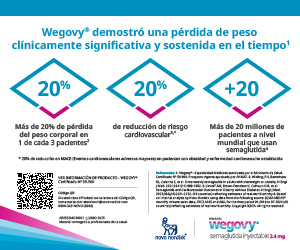Hormone replacement therapy
DOI:
https://doi.org/10.47196/diab.v57i3Sup.681Keywords:
diabetes, hormone replacement therapyAbstract
Menopause is a physiologic event defined by the loss of ovarian follicular function and the final menstruation period. The average age of menopause has been remarkably stable over time and varies little between ethnic groups. Menopause is considered natural when it occurs spontaneously after the age of 45 years. It is surgical when the ovarian insufficiency results from bilateral oophorectomy (BO) or iatrogenic by chemotherapy or pelvic radiation when it occurs in a woman of childbearing age. Menopause is described as early when it occurs in women aged 40 to 45 years. It must be differentiated from premature ovarian failure (POF), which occurs before the age of 40. The perimenopause or menopausal transition is the period of about 4 years that begins with the decrease in fertility, alterations of the menstrual cycle and endocrinological changes and culminates with the last menstruation. The climacteric is the period that covers from the menopausal transition to the first post menopausal years1. Menopausal replacement therapy (MRT) is used in women younger than 60 years and/or within 10 years of the onset of menopause and is approved for four indications: moderate to severe vasomotor symptoms (VMS); treatment of osteoporosis in early postmenopausal women; POF of any etiology and treatment of genitourinary syndrome (GUS) for which local treatment is suggested2.
While MRT reduces the incidence of new-onset type 2 diabetes mellitus (DM), it is not approved for primary prevention3. MRTis not contraindicated in otherwise healthy women with preexisting type 2 DM with moderate to severe VMSand/or GUS and may be beneficial in terms of glycemic control when used for menopause symptom management. But, prior to starting MRT, it is essential to evaluate the risk factors for cardiovascular disease (RFCVD) The age of the patient, the time of her menopause and the presence or not of RFCVD will determine its use1-2. If the woman with DM presents moderate to severe RFCVD and VMS, which contraindicates MRT, non-hormonal therapy should be considered, since VMS has a negative impact on well-being and health expectations4. Due to the complexity of menopause in a woman with diabetes, it is necessary to consider a transdisciplinary team before starting treatment.
References
I. Trémollieres FA, Chabbert-Buffet N, Plu-Bureau G, Rousset-Jablonski C, Lecerf JM, Duclos M, et al. Management of postmenopausal women: Collège National des Gynécologues et Obstétriciens Français (CNGOF) and Groupe d'Etude sur la Ménopause et le Vieillissement (GEMVi) Clinical Practice Guidelines. Maturitas 2022 Sep;163:62-81.
II. The 2022 Hormone Therapy Position Statement of The North American Menopause Society Advisory Panel. The 2022 hormone therapy position statement of The North American Menopause Society. Menopause 2022 Jul 1;29(7):767-794.
III. Mangione CM, Barry MJ, Nicholson WK, Cabana M, Caughey AB, et al; US Preventive Services Task Force. Hormone therapy for the primary prevention of chronic conditions in postmenopausal persons. US preventive services task force recommendation statement. JAMA 2022 Nov 1;328(17):1740-1746.
IV. The 2023 nonhormone therapy position statement of The North American Menopause Society. Menopause 2023 Jun 1;30(6):573-590.
Downloads
Published
Issue
Section
License
Copyright (c) 2023 on behalf of the authors. Reproduction rights: Argentine Society of Diabetes

This work is licensed under a Creative Commons Attribution-NonCommercial-NoDerivatives 4.0 International License.
Dirección Nacional de Derecho de Autor, Exp. N° 5.333.129. Instituto Nacional de la Propiedad Industrial, Marca «Revista de la Sociedad Argentina de Diabetes - Asociación Civil» N° de concesión 2.605.405 y N° de disposición 1.404/13.
La Revista de la SAD está licenciada bajo Licencia Creative Commons Atribución – No Comercial – Sin Obra Derivada 4.0 Internacional.
Por otra parte, la Revista SAD permite que los autores mantengan los derechos de autor sin restricciones.




























